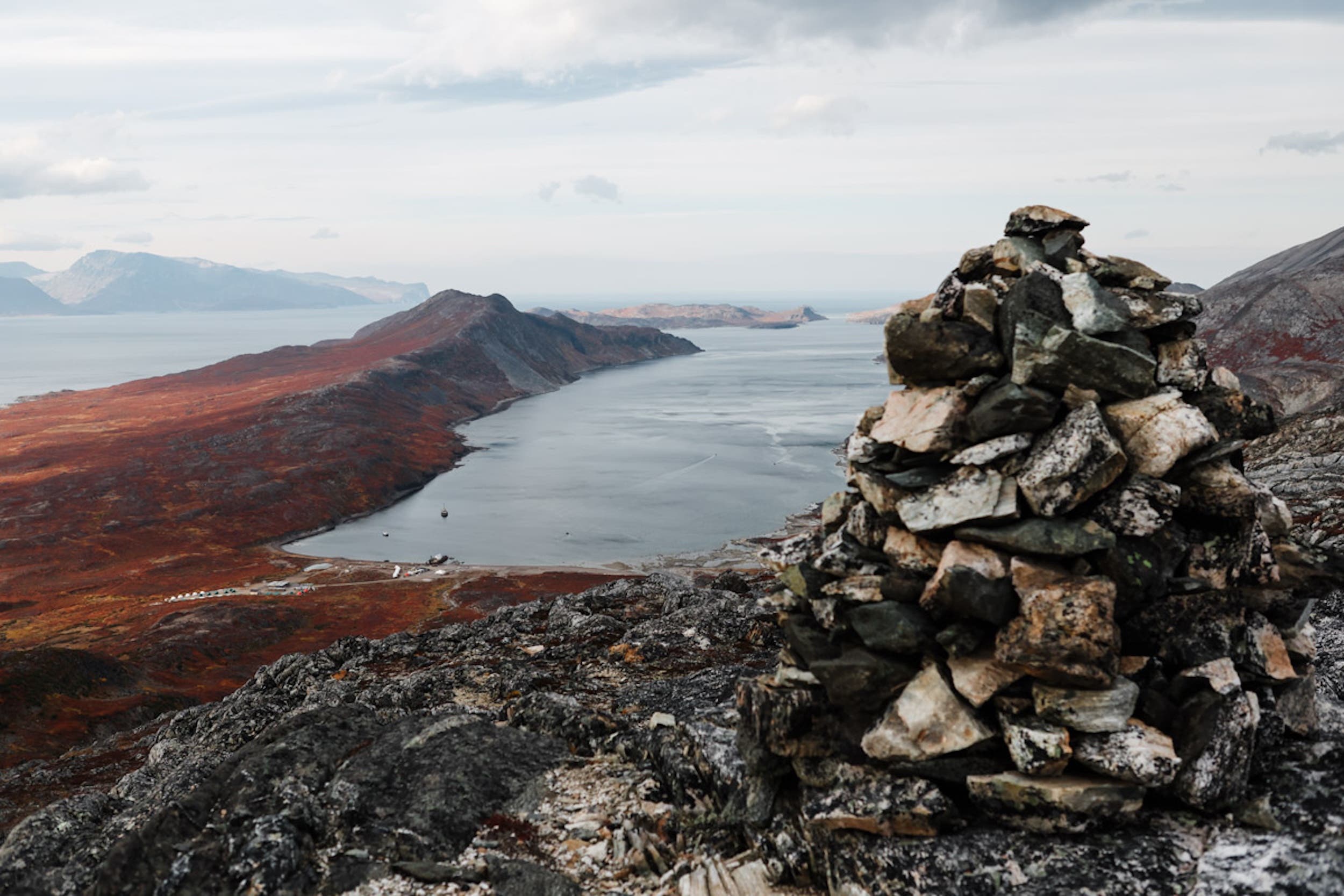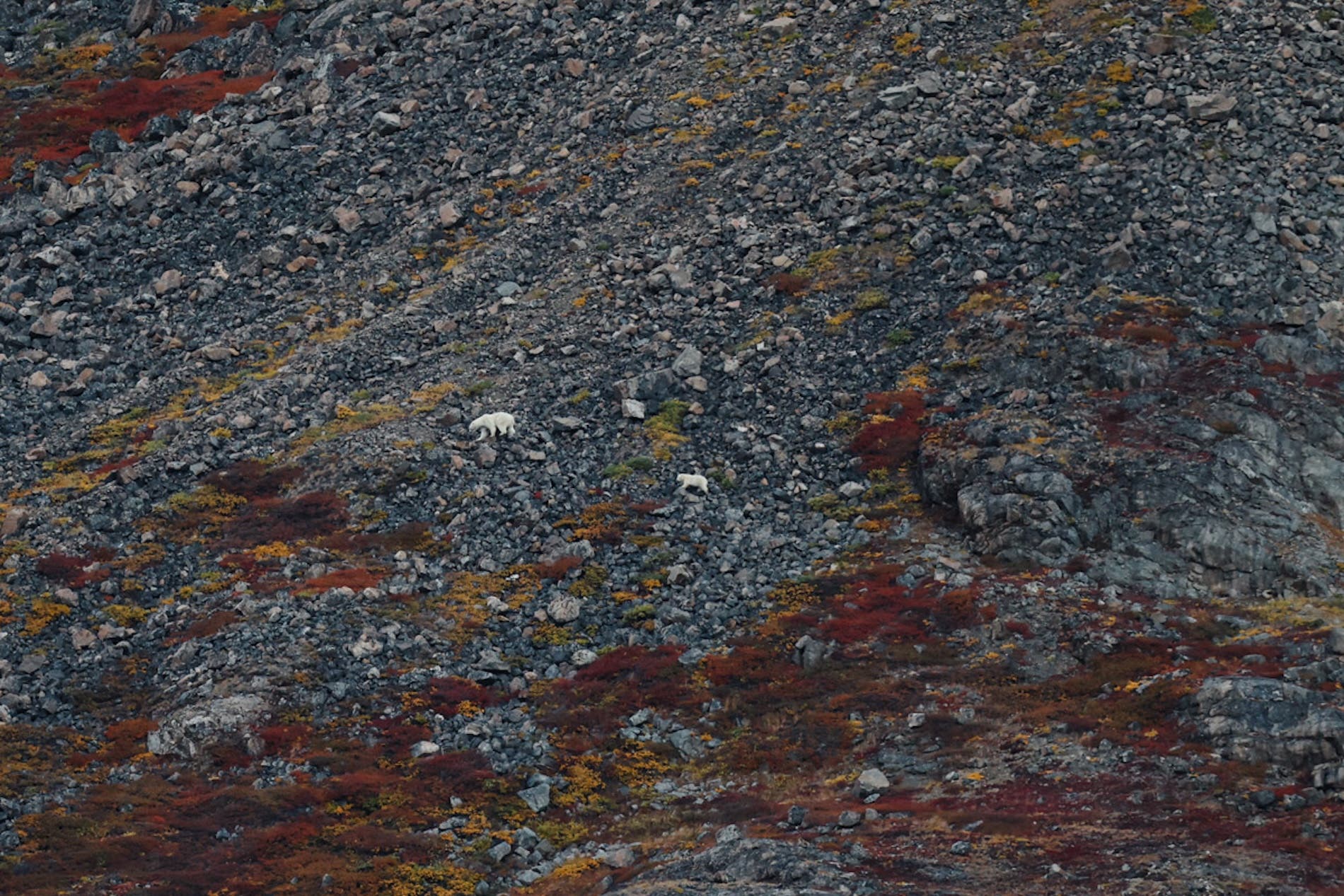Black and Polar Bears Coexist In This Inuit-Led National Park

(Photo: Karthika Gupta)
Way up in the farthest reaches of the Canadian province of Labrador lies a land where glaciers spill into long fjords, jagged ridges crown tall mountains, and silence is the loudest sound you’ll hear. This is Torngat Mountains National Park, one of North America’s most remote corners, where the warm Atlantic Ocean meets the cold Arctic Sea. The mountains themselves are ancient, over 3.9 billion years old, and were formed long before our continents looked anything like they do today. But Torngats aren’t all rocks and ice. They are the traditional homeland of the nomadic Inuit, Indigenous peoples of the Arctic, whose culture and communities are still deeply connected to this land and its seas today.
What makes this area special isn’t just the remoteness. Two iconic species coexist here: nanuq (Inuktitut for polar bear) and tiriganniak (black bear), each moving in its own rhythm across the ice, sea, and tundra.
The Inuit Connection
The word Torngat comes from the Inuktitut “Tongait,” meaning “place of spirits.” For the communities in Nunatsiavut and Nunavik, this land has always been a place of hunting, migration, and ancestral connection. The mountains, fjords, and tundra are part of a living story that has been passed down for millennia.
When Canada established the park in 2005, Inuit leaders insisted it be governed differently. Instead of the typical federal model, Inuit communities co-manage it with Parks Canada, setting rules for visitor access, research, and wildlife protection. There’s also the Inuit Guardians, a boots-on-the-ground team to monitor wildlife and ensure traditional knowledge guides every decision. This means that when you explore the national park, you’re not just hiking through wilderness, you’re walking through a home that’s still very much alive, guided by the people who know it best.

Getting Here
Getting to Torngat is an adventure all its own. The park sits above the tree line at the very tip of the Canadian Arctic, where roads simply don’t exist. The only way in is by air or sea, which makes the journey part of the experience. A few expedition operators, like Adventure Canada, travel the 120-mile coastline by ship, offering rare access to this remote wilderness. Alternatively, you can fly into Nain, the northernmost permanent settlement in Labrador, then take a small plane or boat to Saglek Fjord, where the Torngat Mountains Base Camp comes to life for just a few weeks each summer.
Part research station, part expedition lodge, and part cultural hub, this base camp is run by Inuit guides, bear guards, and Parks Canada researchers. From here, visitors can go by boat or on foot to explore the wild landscape.
Into Bear Country
Unlike many other national parks in North America, it is not advisable to hike alone in Torngat. That’s because bears are everywhere: Polar bears stick to the coastal ice and fjords, hunting seals, while black bears roam the tundra and lower valleys, looking for berries, fish, and small mammals. Black bears here have learned to thrive in the harsh terrain, and some even hunt caribou and fish in the fjords. With plenty of food and space, both species roam the same area without stepping on each other’s paws (pun intended) making Torngat one of the few places where both bears naturally share the landscape.
My own fall adventure into the Torngats came aboard an Adventure Canada expedition cruise that felt more like a backcountry trek than a voyage. Over five days in the park, our team spotted 11 polar bears and 18 black bears. The polar bears appeared first, popping white against the precambrian rocks, while black bears wandered through the berry-covered tundra. Seeing them coexist in this wild expanse was surreal, like witnessing two worlds meeting, the Arctic’s top predator and the subarctic’s ultimate survivor.

Torngat Hikes
The trails in Torngat are more conceptual than defined. Some, like the ones along the hills surrounding Nain, are old caribou tracks. On our trip, curious polar bears thwarted five attempted landings at Martin Bay. Each approach turned into a thrilling (and humbling) Arctic delay. Later that afternoon, we hiked into Eclipse Sound, venturing deep into the fjord while our Inuit polar expedition guide and ex-manager of the basecamp, Wayne Broomfield, shared stories of the people who traversed these routes by dog team, reading the stars, and using the wind and the land to navigate.
Scattered across the tundra, we spotted archaeological ruins of Inuit settlements like tall inuksuit, standing like ancient signposts that guide travelers and tell stories of the people who have long called this land home. Even today, Inuit use the Torngat for hunting caribou and seal, and fishing for Arctic char.
Respecting the Wild
Torngat doesn’t cater to mass tourism, and that’s exactly what makes it special. The park’s short operating season, remote location, and strict safety protocols naturally keep visitor numbers low, typically just a few hundred a year. It’s not an easy trip, but the solitude alone makes it worth it. There are no crowds, no noise, no Instagram viewpoints. But you will find miles of little-trod Arctic landscape, where you quickly realize you are the visitor, not the main character. The animals quite literally decide where you go and how long you stay.
In a world where wild spaces are shrinking, this area truly feels like a miracle. But even here, climate change looms large. “Sea ice forms later each winter and melts earlier each summer, forcing polar bears to spend more time on land,” says Broomfield during our hike. “These shifts further affect hunting, travel, and our core relationship to the area we have called iglu for so long.” It’s a sobering reminder that even in a place this remote, the planet’s changes are impossible to ignore.